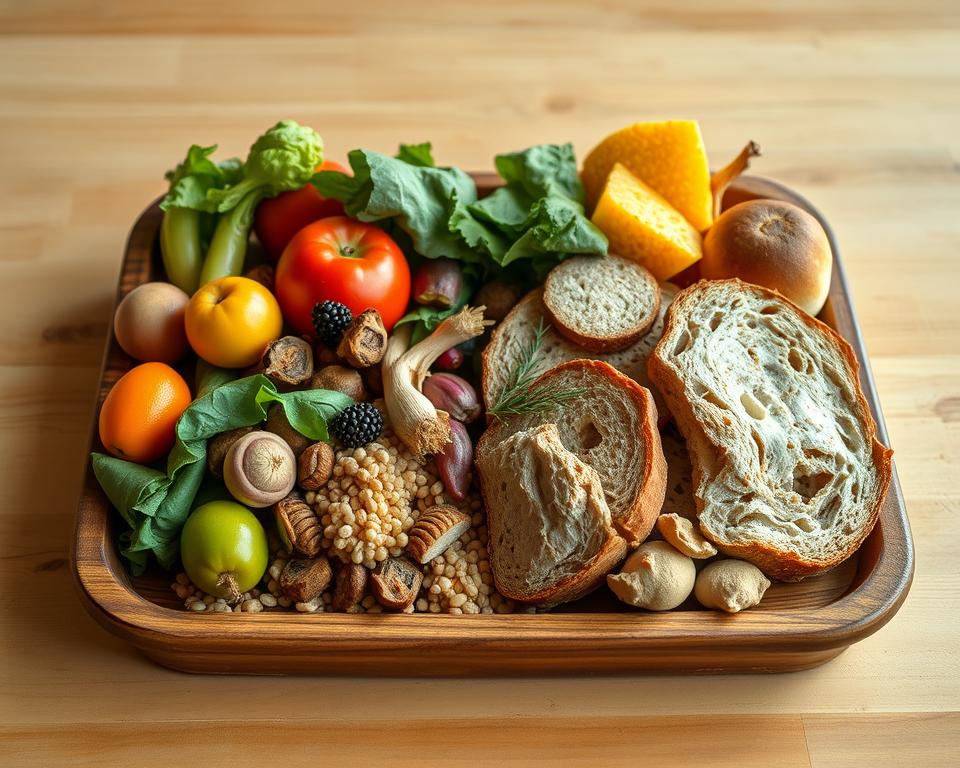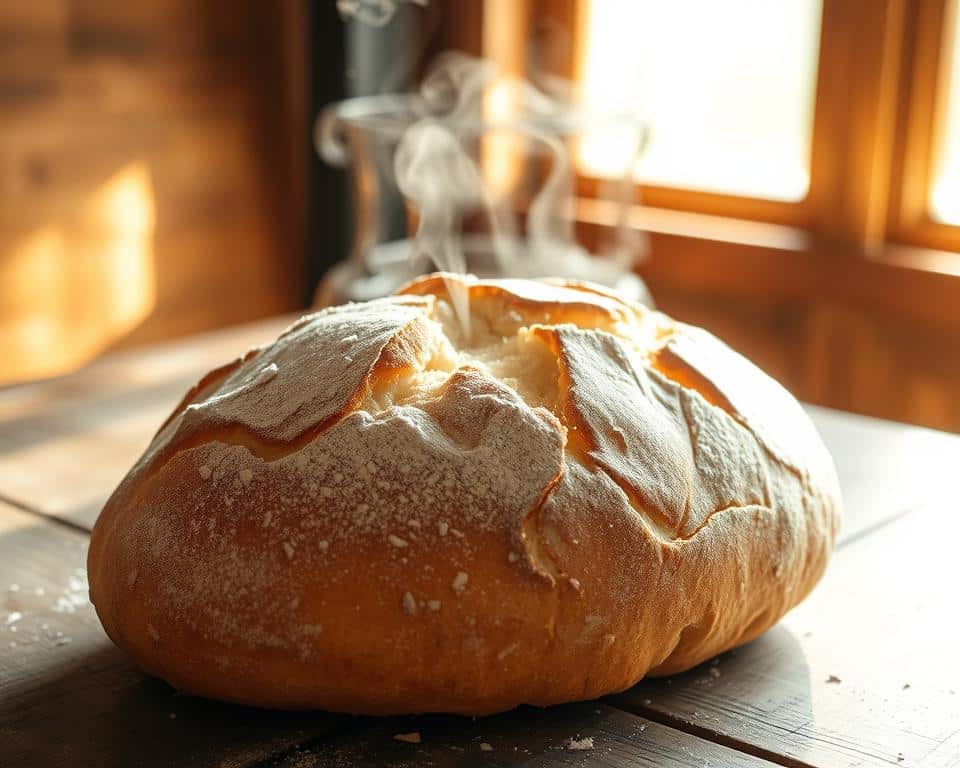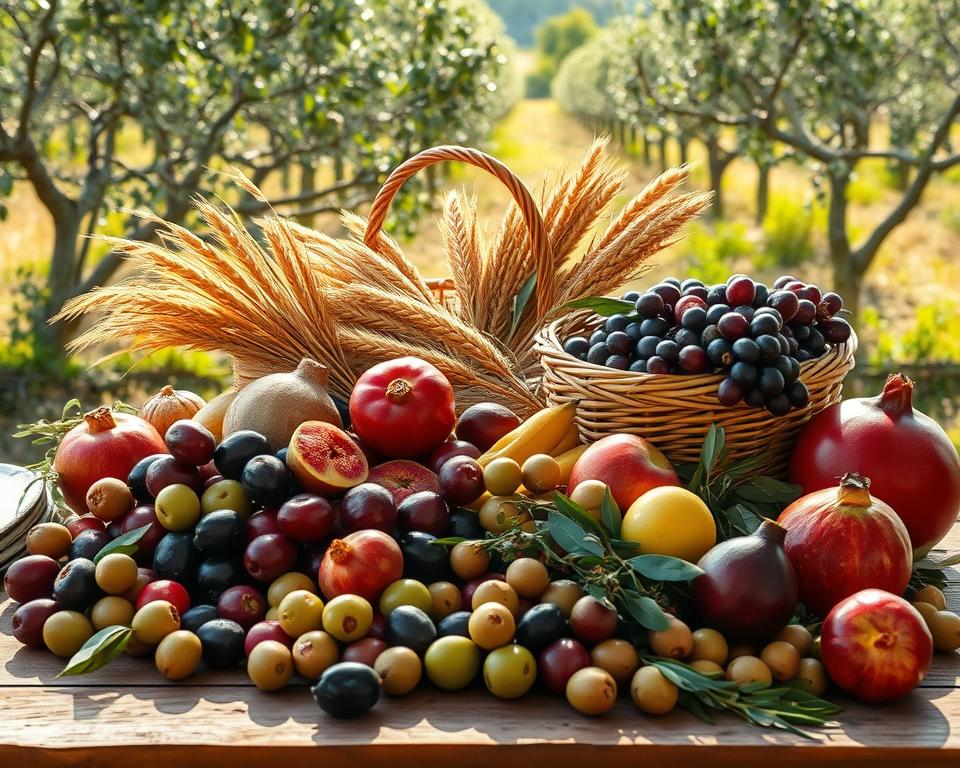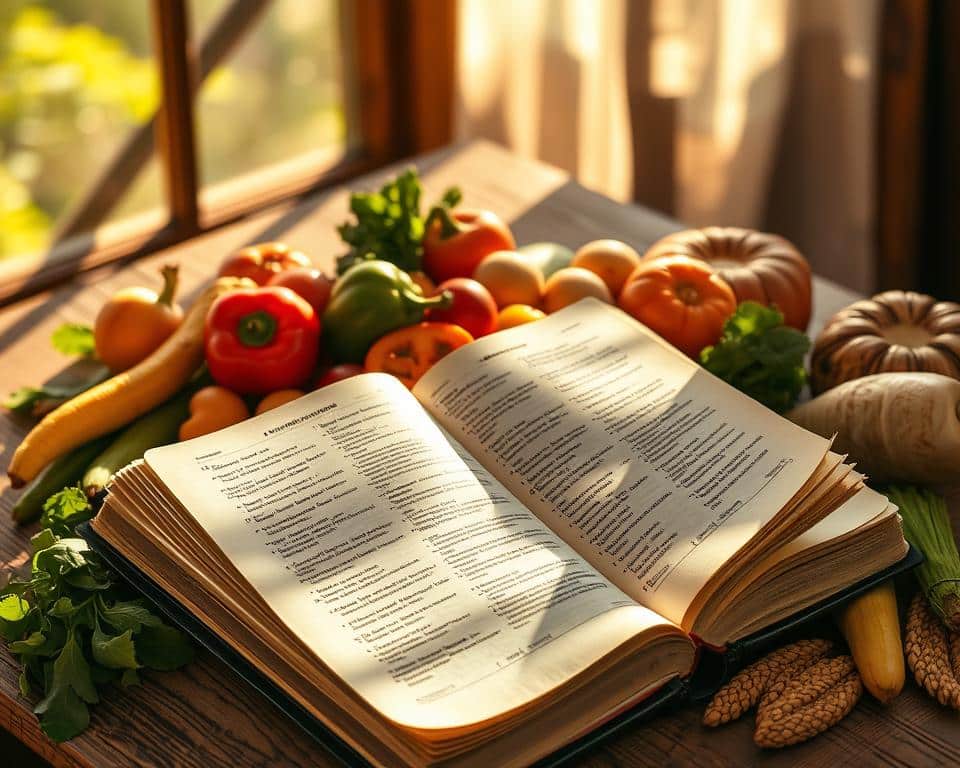“There are no ordinary people. You have never talked to a mere mortal.” — C.S. Lewis. This line reminds me that daily choices matter. Meals shape our bodies, our faith, and our days.
I write to help you see how simple items from Scripture teach real lessons. I list bread, fish, lamb, olives, honey, and more. Each item points to a truth we can apply now.
My aim is clear. I want people to read a short list and gain practical prompts for prayer, thanks, and healthy habits. I show how bread can teach daily trust and how God cares for our body and life.
We will use Scripture accounts so you can check each claim. This small guide reads like a friend who teaches. It is warm, direct, and rooted in God’s word.
Key Takeaways
- Scripture links common food to faith lessons you can use today.
- Bread reminds us to trust God for daily needs.
- Fish, lamb, and fruits show care for the body and wise diet choices.
- The list gives quick lessons and paths for deeper study.
- I invite you to apply these truths with hope and simple meals.
Quick note on clean and unclean food in Scripture
God’s law outlines simple marks that separate clean from clean unclean animals. I use Scripture to show clear signs so you can follow a faithful diet. This short note explains the rules plainly and helps the body honor God’s word.

Clean land animals: split hoof and chew the cud
Clean land animals must have a cloven hoof and chew the cud. Examples are oxen, sheep, and goats (Deuteronomy 14:4–6). These traits give a simple test for meats we choose.
Seafood: fins and scales; birds with exclusions
Seafood is clean only if it has fins and scales. Shellfish do not meet this mark and are excluded (Leviticus 11:9). For birds, Scripture lists several exclusions like eagles, vultures, kites, and ravens.
Blood and fat
Scripture forbids eating blood and the fat of animals (Leviticus 3:17). This rule respects life and health. The New Testament also guides care about food offered to idols and avoiding blood in early church practice.
- Simple standard: follow the Scripture signs so your food choices rest on truth.
- Read labels: care when you buy and prepare meats at home.
Twelve Bible foods and the lessons they teach
Each of these twelve staples from Scripture points to a clear life lesson we can use today. I keep each note short and practical so you can apply it this day.

Bread: God’s provision and daily dependence
Bread reminds me to ask God for daily needs and to live with trust.
Unleavened bread: readiness and remembrance
Unleavened bread calls me to watchfulness and to remember deliverance at Passover.
Olives and olive oil: anointing, health, and service
Olive oil served for light and cooking; I use oil as a symbol of service and care for heart health.
Grapes and wine: joy with restraint
Grapes point to gratitude and measured joy in community meals.
Honey: sweetness and wise limits
Honey offers strength, but Proverbs warns to keep it moderate for the body.
Fish: simple meals that feed heart and body
Fish shows how a plain meal can nourish both body and faith.
Lamb: redemption and obedient worship
Lamb points to sacrifice and to worship that follows God’s word.
Goat milk: household care and steady sustenance
Goat milk reminds me of home care and daily nourishment.
Wheat and barley: work, harvest, and gratitude
Grains call me to honest work and thankful harvest habits.
Pomegranates: fruitfulness and praise
Pomegranates teach me to praise God for fruit and health.
Lentils and beans: humble strength and protein
Lentils give steady energy and a low-cost source of protein.
Vegetables: faithfulness and clear witness
Daniel’s choice of vegetables shows simple faith and clear witness today.
Foods mentioned in the Bible that shape daily life
Common pantry staples carried clear meaning for care, loyalty, and hospitality. Salt, bread, and dairy were not just fuel. They shaped how people ate, welcomed guests, and cared for one another each day.
Salt with bread and meals
Salt seasoned offerings and bread (Leviticus 2:13). It set meals apart and gave steady pattern to each day.
Salt also marked loyalty. Sharing a salted meal showed trust and friendship at the table.
Cheese, curds, and butter in hospitality
The text lists milk, cheese, curds, and butter as normal food items. Hosts used these to meet basic needs and to honor guests.
Simple oil, salt, and bread together care for the heart and steady energy. Small items build strong homes and help keep people healthy.
- Keep a short pantry list for service and quick meals.
- Share plain meals to show kindness and to give thanks.
- Repeat simple patterns that promote good health and trust.
Grains and bread in faith and practice
Grains in Scripture point to steady work, home cooking, and grateful hearts. I name core seeds that families can store and use. Each grain brings a simple lesson for diet, health, and faith.
Wheat, barley, spelt, millet, and flour
Wheat, barley, spelt, millet, and flour are staples to keep on hand. They store well and make steady meals. Choose whole seeds and grind flour fresh when you can to keep more nutrients.
Ezekiel’s sprouted grain pattern and complete protein
Ezekiel 4:9 lists a grain and legume mix that, when sprouted, yields more digestible protein. Sprouting boosts mineral bioavailability and eases digestion.
- Combine wheat or spelt with beans or lentils for a complete protein.
- Sprout small batches to aid nutrient absorption and support the body.
- Rotate grains through the week to add variety to your diet and vegetables.
Unleavened bread in Passover and new beginnings
Unleavened bread marks quick obedience and fresh starts. It anchors Passover practice and teaches readiness.
Families can bake simple loaves that honor God’s word, pray before meals, and treat each loaf as a prompt for thanks.
| Grain | Primary benefit | Scripture reference |
|---|---|---|
| Wheat / Flour | Versatile, stores well, base for bread | Deuteronomy 8:8 |
| Barley | Steady energy, common ancient staple | Deuteronomy 8:8 |
| Spelt / Millet | Alternate grains for variety and resilience | Ezekiel 4:9 |
| Mixed sprouted loaf | Complete protein and better mineral uptake | Ezekiel 4:9 |
Practical plan: buy whole seeds, sprout and mix grains with legumes once a week, and bake a simple unleavened or leavened loaf for family meals. This supports health, honors Scripture, and feeds both body and faith.
Fish with fins and scales: food, work, and community
By the shore I see how a simple catch can teach faith, work, and shared life. A quick breakfast of fish, bread, and conversation links honest labor to hope.
Clear standard: Leviticus 11:9 allows aquatic animals that have fins and scales. That rule helps shoppers choose with confidence and keeps choices simple and kind.
Meals by the sea and shared tables
John 21 shows Jesus cooking fish for His disciples after the resurrection. That shore meal blends work, fellowship, and a calm return to daily life.
Guidance on shellfish and wise choices
Shellfish are excluded by the Scripture standard. Choose tuna, salmon, or cod when you want a simple protein that suits a careful diet.
- Pick fish with fins and scales for clear guidance.
- Use water, gentle heat, and herbs to keep meals light and clean.
- Try a weekly fish night to build family rhythm and thanks.
Simple rule for children: fins and scales show a wise choice.
| Benefit | Example | Why it matters |
|---|---|---|
| Protein and omega fats | Salmon, tuna, cod | Support heart health and steady energy for the body |
| Community meal | Shore breakfast (John 21) | Restores hope and trust through shared work and food |
| Scripture guide | Leviticus 11:9 | Clear standard for purchase and preparation |
Meat from animals that chew the cud: guidance and gratitude
When I choose meat, I try to follow simple rules that honor life and God’s word.
Clean animals are those with a cloven hoof that chew the cud. Examples are sheep, goat, oxen, and deer (Deuteronomy 14:4–6). These traits give a clear line for careful eating.
Practical rules and faithful habits
- Drain blood and avoid fat to obey Scripture and show respect (Leviticus 3:17).
- Slow, simple cooking keeps flavors pure and portions modest.
- Handle and store meats safely to protect health.
- Pair meat with grains and greens for balance and steady energy.
The Passover lamb models ordered worship and careful preparation (Exodus 12). A meal can teach faith when we give thanks and follow clear rules.
| Item | Guideline | Why it matters |
|---|---|---|
| Sheep, goat, oxen, deer | Cloven hoof + chew cud | Clear sign for clean meat choices |
| Blood and fat | Do not eat or serve | Honors life and Scripture command |
| Cooking & pairing | Slow cook; add grains/greens | Balanced diet and grateful meals |
I close with a short prayer I often use: “Lord, thank you for this food. Help us honor life, share wisely, and eat with humble hearts.” Clean meats then become steady strength for body and faith.
Vegetables, herbs, and seeds for steady health
A plate of vegetables can train the mind for clear work and faithful living. I look to Daniel’s ten-day trial as a simple test you can copy at home.
Daniel’s choice and a clear mind
Daniel chose vegetables and water for ten days and showed better appearance and strength (Daniel 1:12). Try a short trial with plain greens, water, and prayer.
This plan supports the body and helps focus. It is an easy way to test how a vegetable-rich meal affects study and work.
Bitter herbs with the Passover meal
Bitter herbs at Passover (Exodus 12:8) teach memory and restraint. A small bite of bitter greens can help mark a season of thanks and sober reflection.
- Try a plate rule: half vegetables, one quarter grains, one quarter protein.
- Use water with meals to aid digestion and steady energy.
- Grow coriander (cilantro seed) and parsley for fresh flavor and vitamins.
- Rotate colors each week for variety and better nutrient balance.
| Item | Benefit | Practical tip |
|---|---|---|
| Leafy vegetables | Vitamins A, C; support clear mind | Steam or toss with light olive oil and herbs |
| Coriander / cilantro seed | Supports steady blood sugar and gentle detox | Use ground seed in dressings or soups |
| Parsley | Vitamins and potassium for good health | Add fresh to salads and stews |
| Bitter herbs | Memory, restraint, liturgical meaning | Serve small portions with seasonal meals |
Honey and natural sweets in moderation
A spoonful of raw honey reminds me that little things can shape a whole day. I like how a small taste brings pleasure and prompts a short prayer of thanks.
“Eat only what you need of honey, lest you be filled with it and vomit.”
Keep it small and plain: raw honey contains antioxidants like pinocembrin and chrysin and may support probiotic growth. Local raw honey can help some people with seasonal allergies.
- Enjoy honey with care; measure each portion and favor fruits as the main sweet.
- A spoon on morning porridge gives steady energy and a gentle start to the day.
- Avoid honey for infants; ask a doctor if unsure about allergies or health concerns.
- Read labels and swap heavy syrups for a light drizzle plus spices.
Simple rule: sweeten lightly, limit treats for the body, and give thanks for every bite.
Milk and dairy in home and feast
Milk and simple dairy show up often as household staples and seasonal fare. Scripture lists milk, cheese, curds, and butter as regular items used at tables and feasts. This long habit ties daily care to faith and community.
I note that goat milk offered another option for many families. It can provide useful protein and minerals and may help prevent anemia and bone loss in some contexts. I favor plain choices and small servings when testing how dairy affects your body.
Practical tips I use at home:
- Try yogurt with fruit, cheese with bread, or butter on warm grains for simple meals.
- Store dairy cold and handle it cleanly so it stays safe for years of use.
- If dairy upsets you, reduce portions and retest; some families omit it and do well.
- Pair milk and cheese with whole grains and greens for balance at the table.
| Item | Use | Why it helps |
|---|---|---|
| Milk | Drink or cook | Provides protein and modest minerals for the body |
| Goat milk | Alternate option | May aid mineral uptake and help bone health |
| Cheese/yogurt | Meal additions | Extend meals and add flavor with small portions |
Read labels and favor plain items that stay close to how God made them. Before meals, I pause to give thanks. That habit keeps food simple and hearts humble while we care for our health and body with wise portions and plain recipes.
From ancient tables to today: eat with purpose
Ancient meals teach clear habits that help our bodies and hearts now. I urge you to eat for the glory of God (1 Corinthians 10:31) and let every plate reflect trust and thanks.
Keep bread, grains, vegetables, and fruits as daily staples. Choose clean meats, avoid blood, and pick fish with fins and scales. Use plain water with meals and favor olive oil when you cook.
Keep honey and milk small and simple. Write a short shopping list each week and shop whole food first to build steady health over years.
Practical next steps: read Scripture, choose bible foods patterns, follow clean unclean rules, pray before meals, and feed people with hope. Do this today for life and for glory God.



